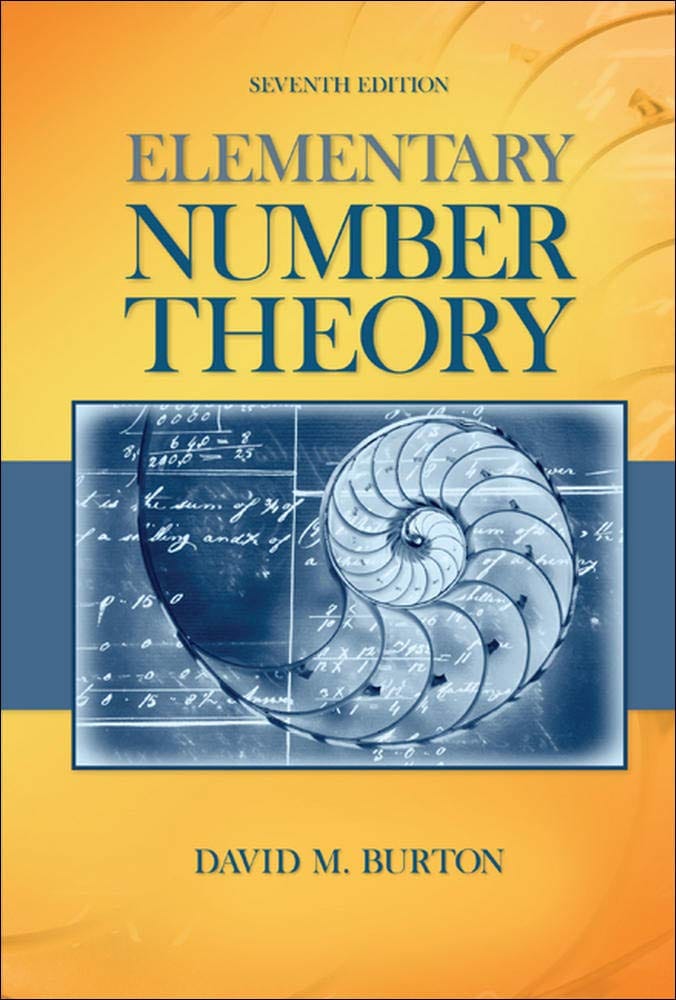Number Theory

Elementary Number Theory Problems 3.3 Solution (David M. Burton's 7th Edition) - Q28 Paid Members Public
My Solution for "(a) If $n > 1$, show that $n!$ is never a perfect square. (b) Find the values of $n \geq 1$ for which $$n! + (n + 1)! + (n + 2)!$$ is a perfect square. [Hint: Note that $n! + (n + 1)! + (n + 2)! = n!(n + 2)^{2}$ .]"

Elementary Number Theory Problems 3.3 Solution (David M. Burton's 7th Edition) - Q27 Paid Members Public
My Solution for "Prove that for every $n \geq 2$ there exists a prime $p$ with $p \leq n < 2p$. [Hint: In the case where $n = 2k + 1$, then by the Bertrand conjecture there exists a prime $p$ such that $k < p < 2k$.]"

Elementary Number Theory Problems 3.3 Solution (David M. Burton's 7th Edition) - Q26 Paid Members Public
My Solution for "Verify the following: (a) There exist infinitely many primes ending in $33$, such as $233$, $433$, $733$, $1033, ....$ [Hint: Apply Dirichlet's theorem.] (b) There exist infinitely many primes that do not belong to any pair of twin primes.... "

Elementary Number Theory Problems 3.3 Solution (David M. Burton's 7th Edition) - Q25 Paid Members Public
My Solution for "Let $p_{n}$ denote the $n$th prime. For $n > 3$, show that $$p_{n} < p_{1} + p_{2} + \cdots + p_{n-1}$$ [Hint: Use induction and the Bertrand conjecture.]"

Elementary Number Theory Problems 3.3 Solution (David M. Burton's 7th Edition) - Q24 Paid Members Public
My Solution for "Determine all twin primes $p$ and $q = p + 2$ for which $pq - 2$ is also prime."

Elementary Number Theory Problems 3.3 Solution (David M. Burton's 7th Edition) - Q23 Paid Members Public
My Solution for "(a) The arithmetic mean of the twin primes $5$ and $7$ is the triangular number $6$. Are there any other twin primes with a triangular mean? (b) The arithmetic mean of the twin primes $3$ and $5$ is the perfect square $4$. Are there any other twin primes with a square mean? "

Elementary Number Theory Problems 3.3 Solution (David M. Burton's 7th Edition) - Q22 Paid Members Public
My Solution for "Show that $13$ is the largest prime that can divide two successive integers of the form $n^{2} + 3$."

Elementary Number Theory Problems 3.3 Solution (David M. Burton's 7th Edition) - Q21 Paid Members Public
My Solution for "(a) For any integer $k > 0$, establish that the arithmetic progression $$a + b, a + 2b, a + 3b, ...$$ where $gcd(a, b) = 1$, contains $k$ consecutive terms that are composite. [Hint: Put $n =(a+ b)(a + 2b) \cdots (a+ kb)$ and consider the $k$ terms $a+ (n + 1)b, a+ (n + 2)b, ..."




